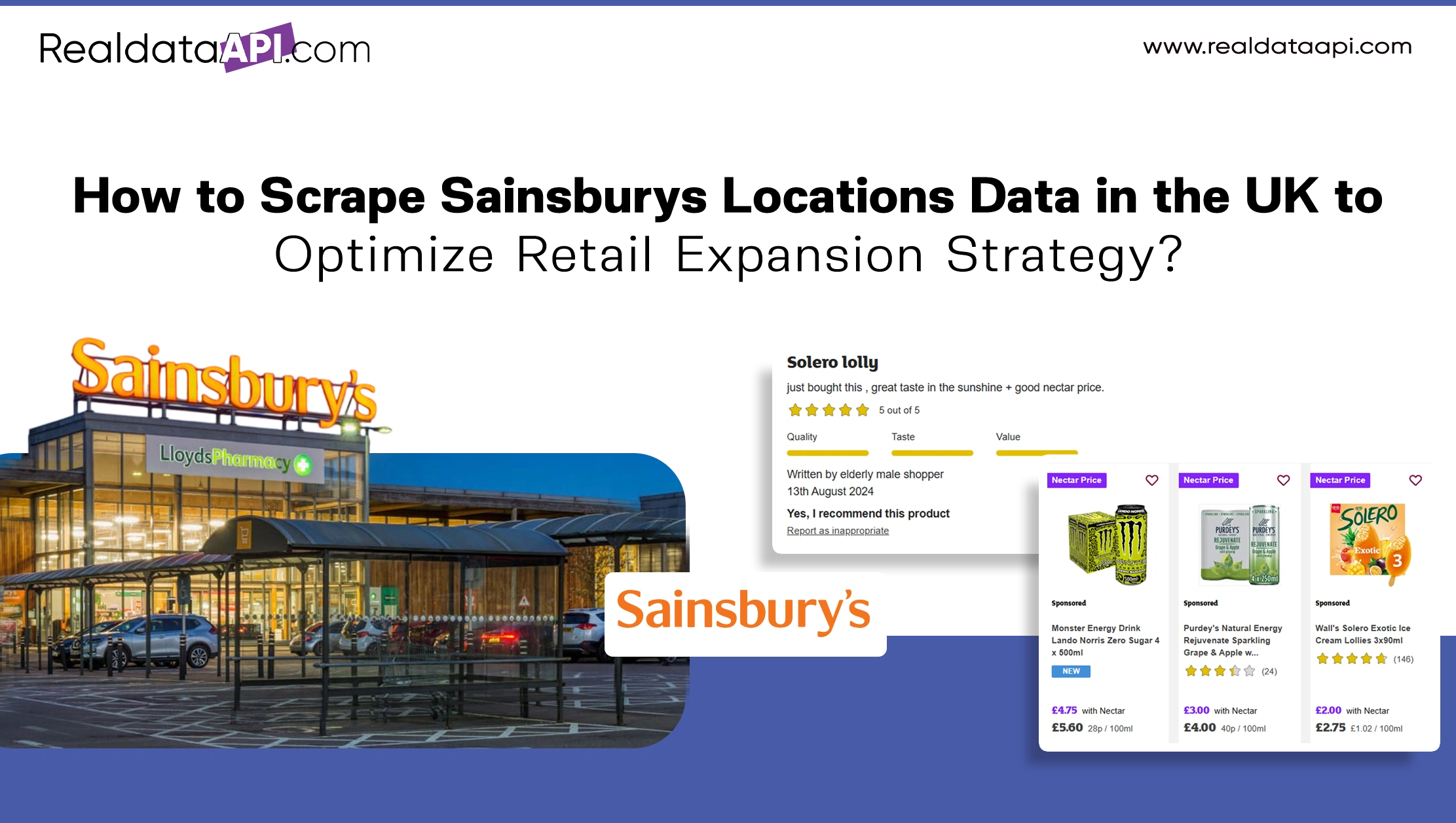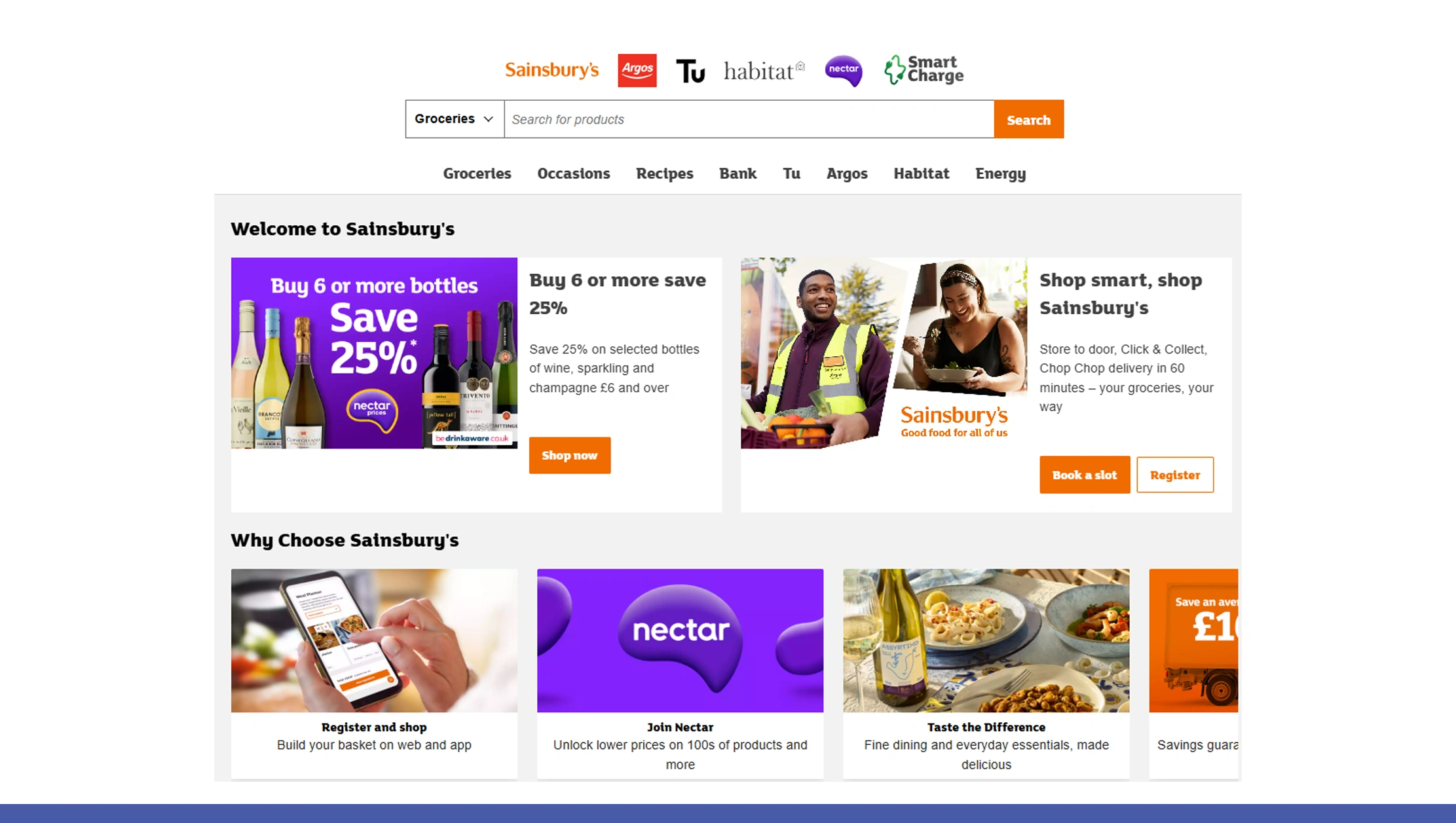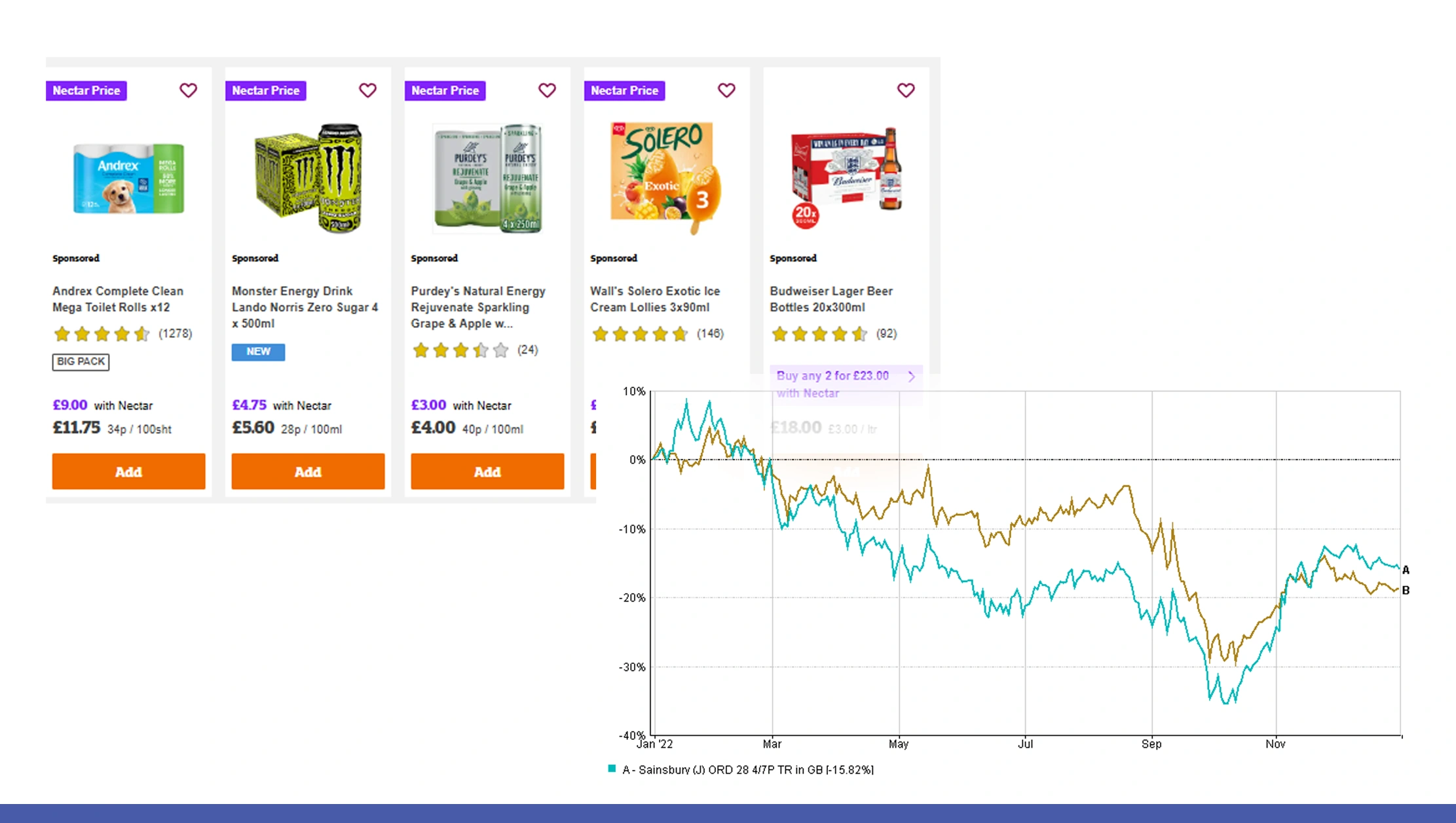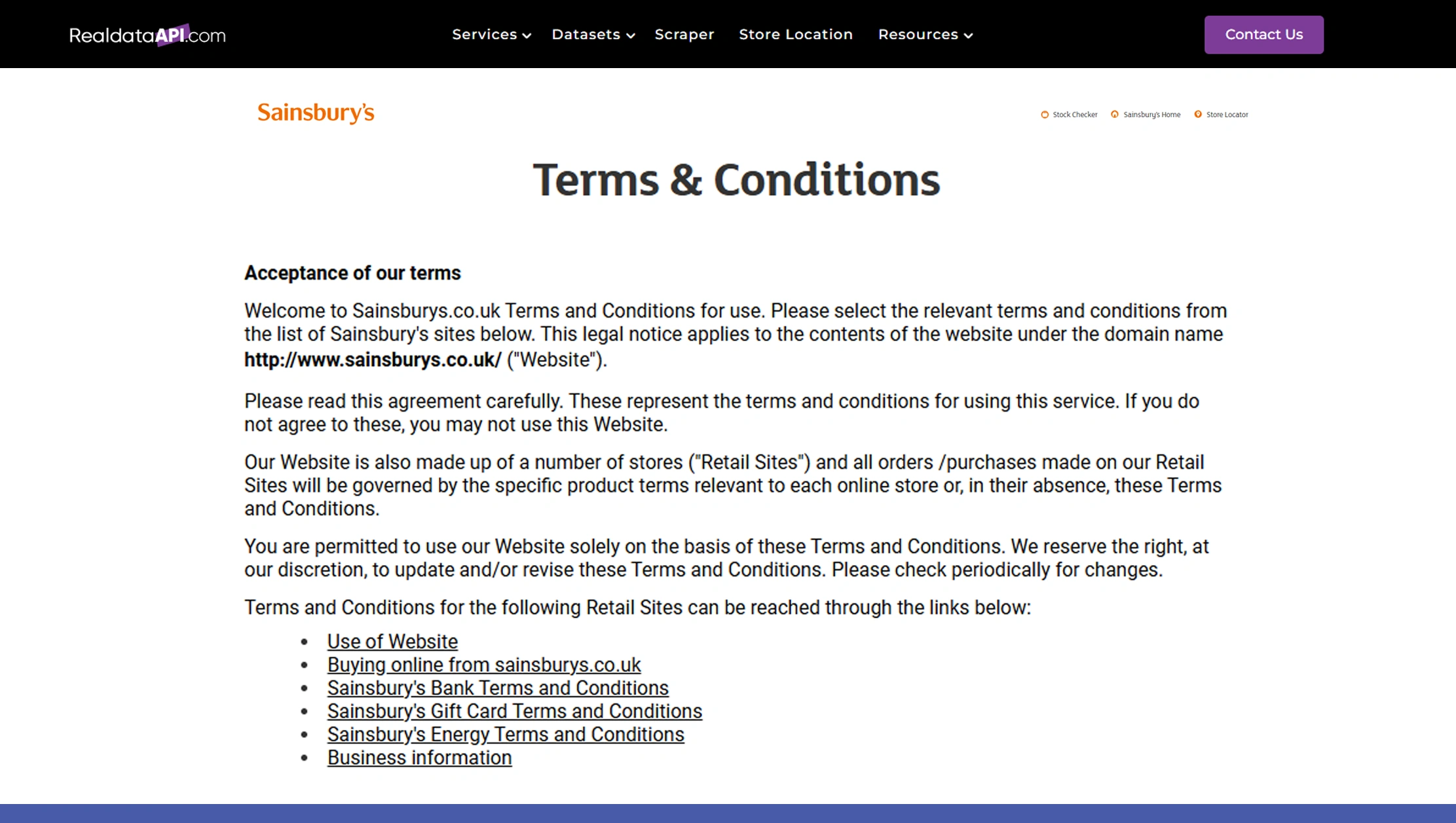

Introduction
In the evolving landscape of UK retail, location intelligence has become a vital part of strategic expansion. Knowing where your competitors operate—especially giants like Sainsbury’s—can offer significant insights into consumer behavior, high-traffic zones, and underserved regions. That’s where the power of web scraping Sainsburys locations comes in.
By using location data, businesses can pinpoint optimal store placement, predict market saturation, and optimize logistics. Scrape Sainsburys locations data in the UK and gain access to granular details like address, store type, geo-coordinates, and operating hours. This information is not only valuable for new retailers but also for existing chains looking to recalibrate their network.
From 2020 to 2025, Sainsbury’s has shifted focus to integrating smaller convenience formats while continuing to lead in the supermarket segment, increasing its locations to over 1,400 stores across the UK. With such dynamism in retail footprints, real-time data through reliable scraping techniques becomes essential.
In this blog, we’ll walk you through the process, benefits, use cases, and tools needed to scrape Sainsburys locations data in the UK, with a spotlight on Real Data API as your trusted data provider.
Why Sainsbury’s Location Data is Crucial for Retailers?
Between 2020 and 2025, Sainsbury’s has undergone a strategic transition—from consolidating its larger stores to expanding its convenience chain, Sainsbury's Local. This shift reflects broader retail trends like micro-retailing, urban demand, and hybrid shopping models.
| Year | Total Sainsbury’s Stores | Sainsbury’s Local | Supermarkets |
|---|---|---|---|
| 2020 | 1,400 | 800 | 600 |
| 2022 | 1,430 | 850 | 580 |
| 2025 | 1,500 (proj.) | 920 (proj.) | 580 (steady) |
Understanding this footprint is essential. If you're a competitor, supplier, or logistics firm, this information helps answer:
- Where are high-density urban stores located?
- Which regions lack major grocery chains?
- How does store size affect regional penetration?
Scraping Sainsburys Locations Data UK enables informed decisions about real estate, delivery networks, and competitive response.
Key Data Fields When You Scrape Sainsburys Locations Data
When businesses choose to scrape Sainsburys locations data, the goal is to extract actionable, structured information. Here are the most valuable fields typically captured:
- Store Name
- Address (Street, City, Postal Code)
- Geo-coordinates (Latitude/Longitude)
- Opening Hours
- Store Type (Local or Supermarket)
- Services (Bakery, Fuel, ATM, etc.)
Sample Output Table:
| Store Name | City | Type | Latitude | Longitude | Services |
|---|---|---|---|---|---|
| Sainsbury's Local | London | Convenience | 51.5134 | -0.0890 | ATM, Self-Checkout |
| Sainsbury’s | Manchester | Supermarket | 53.4808 | -2.2426 | Bakery, Cafe |
This structured format allows integration with BI tools, mapping software, and sales territory planning systems. When businesses scrape store location data, they gain the edge to visualize market gaps and competitor coverage instantly.
Use Cases: Retail Expansion Powered by Sainsburys Location Data

Here’s how different stakeholders benefit from Sainsburys locations data scraping:
A. Retail Chains
- Identify regions with low competition.
- Avoid market saturation.
B. Real Estate Investors
- Determine high-footfall zones.
- Use proximity to Sainsbury’s as a valuation metric.
C. Logistics & Delivery Startups
- Optimize delivery hubs.
- Reduce last-mile inefficiencies.
Sainsburys locations data scraping UK not only supports expansion but also enhances existing store performance by offering insights into adjacent competitors and services.
Stat: Over 78% of UK urban households are within a 15-minute walk of a Sainsbury’s store (ONS data, 2024).
Unlock smarter retail expansion—leverage Sainsburys location data today to discover growth opportunities and outperform your competition with precision.
Get Insights Now!How to Technically Scrape the Data (with Compliance in Mind)?

To scrape Sainsburys locations data in the UK, follow these technical steps:
1. Inspect the Website – Use browser DevTools to locate store locator APIs or map endpoints.
2. Build Scraper – Use tools like Python + BeautifulSoup or Scrapy to extract HTML/JSON data.
3. Parse & Clean Data – Standardize location names, remove duplicates.
4. Store in Database – Use MySQL, MongoDB, or CSV files for easy integration.
5. Automate & Monitor – Use cron jobs to run scrapers weekly.
Always respect robots.txt and terms of service. When in doubt, Real Data API offers a compliant and scalable solution that saves engineering time and ensures clean datasets.
Competitive Benchmarking Using Sainsbury’s Location Footprint
Use web scraping Sainsburys locations to benchmark against competitors like Tesco, Lidl, or Waitrose. Key analysis areas include:
- Overlap mapping via GIS tools
- Average distance between stores
- Urban vs. rural store density
| Retailer | Avg. Urban Density | Avg. Rural Density |
|---|---|---|
| Sainsbury’s | High | Medium |
| Tesco | High | High |
| Lidl | Medium | Low |
This type of benchmarking is crucial for retailers planning UK rollouts or repositioning existing stores. With Real Data API, these insights are just a query away.
Real-Time vs. Historical Data: Which One Do You Need?

Retail trends are dynamic—store closures, remodels, or new launches happen monthly. So when you scrape Sainsburys locations data in the UK, it’s important to decide:
- Real-time data for immediate expansion plans
- Historical data for trend analysis and investment modeling
From 2020 to 2025, there has been a steady growth in Sainsbury’s Local formats while large-format store growth plateaued. This trend highlights the need for continuous updates.
Scrape Sainsburys locations data in the UK through a provider that supports both real-time sync and historical archiving—something Real Data API specializes in.
Choose the right data for your strategy—access real-time or historical Sainsburys location data instantly with Real Data API.
Get Insights Now!Why Choose Real Data API?

Real Data API offers a ready-to-use, scalable solution to access structured and updated location datasets, including Sainsbury’s.
Key Benefits:
- Compliance-First: Ethically sourced, terms-of-service aligned.
- Real-Time Updates: New stores? Renovations? You’re always up to date.
- Custom Filters: Filter by region, type, services, and more.
- Plug-and-Play Integration: API-ready for Tableau, Power BI, and CRMs.
With Real Data API, you eliminate the need to build, host, and maintain scrapers. Focus on insights—not infrastructure.
Bonus: Get access to multi-retailer data bundles (e.g., Tesco, Aldi, Morrisons) in one API call.
Conclusion
If you’re serious about scaling in the UK retail market, it’s time to scrape Sainsburys locations data in the UK with precision and purpose. From strategic expansion to competitive intelligence, Sainsbury’s location data unlocks smarter, faster decisions. Whether you're a retail strategist, investor, or logistician, don't waste time building scrapers from scratch. Let Real Data API deliver clean, accurate, and actionable Sainsburys locations data—straight to your systems. Ready to get started? Try Real Data API and supercharge your location intelligence today!













